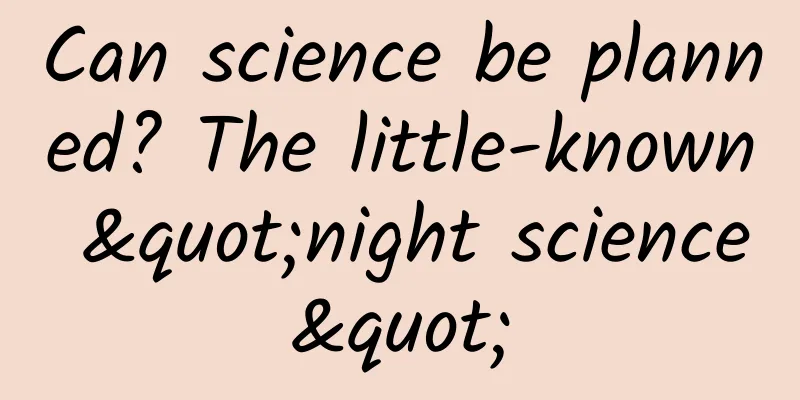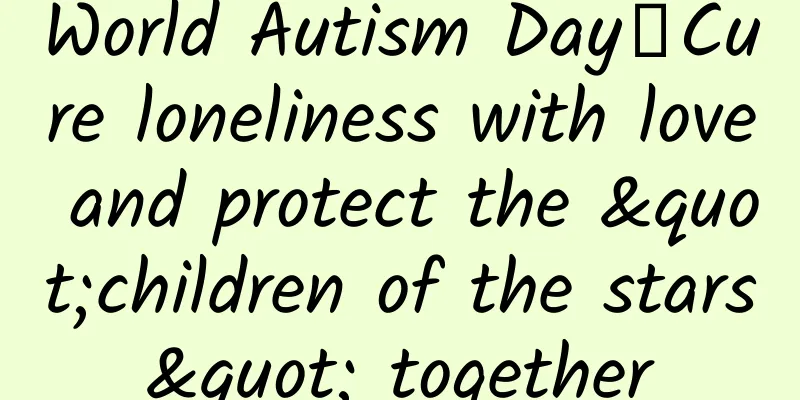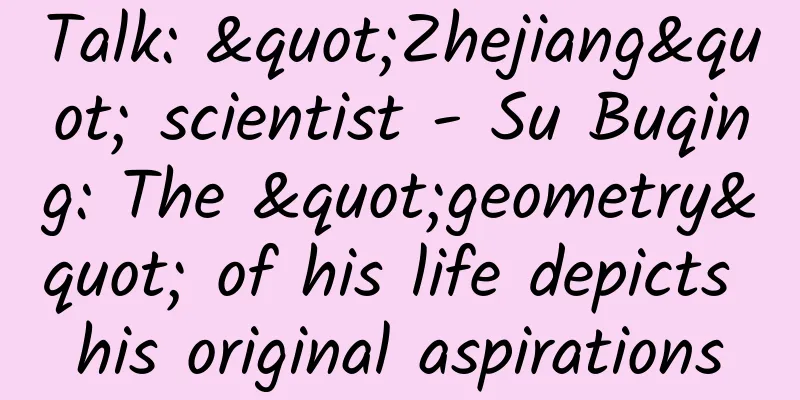Can science be planned? The little-known "night science"

|
This article is part of a series of commentary articles published in Genome Biology by Itai Yanai, Professor of Biochemistry and Molecular Pharmacology at New York University School of Medicine, and Martin J. Lercher, Professor of Bioinformatics at Heinrich Heine University Düsseldorf. The original title "What is the question?" was added by the translator. The article borrows the concept of "night science" proposed by Nobel Prize winner François Jacob to describe the author's experience in exploring hypotheses and problems in the scientific research process. Different from the orderly and logical "day science" in the public's view, "night science" refers to the exploration process before proposing a hypothesis - when the idea is not yet mature, science has another side that is jumpy, ambiguous, and blind (see the previous article "What do scientists do at night when they are not publishing papers?"). Written by | Itai Yanai, Martin Lercher Translated by Zhou Shuyi Stephen Hawking made an important point in 1976 that became known as the information paradox. It was an extremely profound and important observation. Hawking didn't get the right answer, but that didn't matter. What mattered was that he asked the right question. This sparked a debate that took 25 years to resolve. —Leonard Susskind (American physicist) The biggest public misconception about science is that scientists work to solve problems. In fact, scientists mainly create problems. We have previously introduced the concepts of day science and night science proposed by François Jacob: day science is moving towards a set goal, solving problems in the laboratory or in front of the computer; night science is when the mind wanders freely, generating new ideas and discovering hidden connections. It is certainly easier to imagine science as a logically rigorous, step-by-step process. But it is in this unpredictable and wandering process of night science that new problems arise, paving the way for new discoveries and profoundly changing our view of reality. What's your question, Einstein? Imagine you are a fly on the wall of Professor Heinrich Friedrich Weber’s office at ETH Zurich in 1900. "How can I help you, Mr. Einstein?" the professor said sternly, looking at his least favorite student. "Professor," the brash student began, "what are the great unsolved problems in theoretical physics? I want to solve them." "Well, young man, if you come to my lectures regularly, you must know that there are three major unsolved problems today. With your talent, solving them is wishful thinking. But I will tell you again: First, how do we change the concept of time so that Maxwell's equations are consistent with the observed invariance of the speed of light? Second, how do we avoid the contradiction between the absorption and emission of light in the form of discrete units and the concept of blackbody radiation? Finally, how do we understand gravity as the curvature of time and space?" With these questions, young Einstein rushed back to his bench. The curious scientist tackled the problems one by one, taking each logical step boldly, and he was unstoppable, each step leading to an elegant result. He solved all three problems at the age of 40, becoming the scientific totem we are familiar with today. This is the way scientific progress is: the experts in the field look for the gaps in the scientific edifice, list the main problems to be solved, and then researchers around the world rack their brains for them until one lucky person comes up with the answer. To accelerate this scientific process, it is not uncommon to see publicly listed lists of scientific problems. The National Cancer Institute (NCI) of the United States has released challenging problems in the field of cancer research and provided research funding. Mathematicians have listed seven "Millennium Problems" that have not yet been solved, and each problem has a reward of one million US dollars. Wikipedia lists a list of unsolved problems in 14 different disciplines, including physics, chemistry, biology, medicine, and neuroscience. So can we naturally expect that the masters of various fields will gather together in ten years, nominate the smart people who answered these questions, award prizes and medals, and then compile the next "Top Ten Problems List"? Surprisingly - or perhaps expectedly - if you list all the major discoveries in the life sciences from 1990 to 2015 and compare them with the previous list of problems, you will find that there is almost no overlap between the two (Table 1). As you might have guessed, Einstein’s so-called “three problems” were pure fiction from the beginning. He had only problems with physics that came mostly from his own thinking. Let’s take the first problem, for example. While still in school, Einstein discovered an interesting paradox: If you imagine yourself chasing a beam of light at the speed of light, it should appear to be a series of oscillating, stagnant electromagnetic waves—but this would contradict Maxwell’s equations, which perfectly explain the properties of electromagnetic radiation. For years, Einstein tried to modify Maxwell’s equations to resolve this contradiction. He failed again and again until one night, while complaining to a friend and walking home, he had a flash of inspiration: the problem wasn’t Maxwell, but time. What if our understanding of time itself was wrong? At some point, instead of fighting the equations to the end, Einstein let his thoughts wander. In other words, in his nighttime scientific thinking, he finally arrived at the key question to solve the problem: Can we change our understanding of time to make everything self-consistent? This problem was not assigned by someone else, but discovered by Einstein himself. The difficulty with following a list of questions is that all the good questions have already been answered, especially those that can be answered. So why don’t scientists just leave the questions alone and let their minds wander? Instead, they seem to subconsciously think about having a clear question—after all, the thread of almost every scientific paper starts with a clear question and then moves straight toward the answer. In fact, the way scientists tell about new discoveries may say more about how humans communicate knowledge than how that knowledge is actually generated. This is not just because people have always loved a good story—in order to make the whole process clear, a linear account with logical links is indeed the most effective way. Behind the linear narrative of the paper, they may still spend a lot of time wandering around in the dark, looking for problems. But once we stumble upon the right problem, it will change our minds and even completely change the direction of our entire research. Unknown unknowns We often compare a body of knowledge to a wall: bits and pieces of knowledge are put together like bricks to form a whole, forming a known area in a certain area. This metaphor implies that to advance science, we need to strengthen and expand this wall of knowledge, improve its explanatory power, and extend it beyond textbooks. The holes in the wall are considered "knowledge gaps", which can be filled to improve and enrich existing theories. Solving a particular problem is often just clarifying a corner of the wall of knowledge. But this picture can give the false impression that knowledge and its accumulation can be carefully planned and tightly scheduled. On the contrary, the nature of scientific discoveries is that they are unpredictable: new discoveries may not fit into the existing body of knowledge. Although the original intention of the research may be to fill a gap, the actual result may not be the right piece of the puzzle, but the opening of an unexpected new area: sometimes we have to build a new wall perpendicular to the old one, or even tear down part of the old wall. For many people, this concept is not very comfortable. After all, we prefer a neat and beautiful world that can be explained by a rational logic. However, the most interesting unknowns in science are unknown unknowns - we don’t even realize they exist until we encounter them unexpectedly. A truly new problem, that is, the unknown unknowns, is unpredictable. Asking such questions requires not only daytime science but also nighttime science work, but this aspect is often obscured by the problem-solving process. In some cases, scientists may spend years to solve a problem, just like Hawking mentioned at the beginning of the article. They receive systematic training and learn the research methods of daytime science-the design and control of experiments; while night science often can only rely on themselves to slowly explore: new students in the laboratory are usually responsible for verifying hypotheses, and they may equate science with verifying hypotheses. Many young postdocs are told that solving topics assigned by others is the task of doctoral students, and now they must rely on themselves to find unknown unknowns. Existing questions that the scientific community has listed (such as those listed in the left column of Tables 1 and 2) are often too general to inspire new research directions. To answer such questions, it is often necessary to reframe, rephrase, and refocus the original question. This will reveal new aspects of the problem and is only possible after a deep insight into the phenomenon. For example, "Does the microbiome affect tumor growth?" is a reasonable question, but it can only be a starting point for exploration. After a little analysis and a lot of nighttime scientific thinking, we may come back to ask, for example, "Is the microbiome an accomplice of the tumor and manipulated by it?" or "Do bacteria enter tumor cells?" These new questions may generate new hypotheses that can be tested. Sometimes, new questions may not even be asked for a specific existing question, but they may lead to the answer in an unexpected way. Our ignorance of a field often provides fertile ground for questions to emerge, and further exploration of new questions requires in-depth research in the field. For example, Francisco Mojica proposed a new hypothesis to explain why bacterial genomes have a special structure - researchers call it "clustered regularly interspaced short palindromic repeats (CRISPR)" with "spacers" of equal length in between, with seemingly random sequences. Before Mojica, few scientists were interested in this strange structure. With CRISPR, the question could be expressed as "Why do bacteria have CRISPR elements?" But this question is too general to be answered, and the spacers have been largely ignored. Mojica asked: "What does the similarity between the spacers and known DNA sequences mean?" The question was a sharp one, born from night science and further answered by rigorous day science: the spacers are copies of viral sequences, guiding the bacteria's acquired immune system to resist the corresponding viral invasion and destroy its DNA. Table 2 lists more examples of refocusing problems and achieving breakthroughs. "Storytelling" As Susskind commented on Stephen Hawking at the beginning of the article, if a scientist asks an important question, then even if the answer he gives is later found to be wrong, he will still be praised for asking the question. This is because a question that has never been asked before will naturally go beyond the old cognition: answering the question only requires logical steps, but asking the question requires an illogical leap into the unknown - this is the characteristic of night science. So why doesn’t this seem to be the case? Why do people seem to value answers more than questions? It may be because a new question is so powerful that it can change our reality. Questions tend to erase their origins—once a question is asked, it’s hard to imagine what it was like before it was asked. Questions reveal a new aspect of reality, and people’s attention is immediately drawn to the search for answers. To illustrate this, take the New Yorker cartoon contest—you have to come up with a funny title for a cartoon. This is a difficult challenge, as anyone who has tried it will know (see Figure 1, readers, please try it!). However, once you read someone else’s title, it’s easy to get stuck in it and it’s hard to break out of it (the reference title is hidden in the caption of Figure 2). Similarly, a new scientific question may seem obvious once it’s asked (such as “What does the similarity between the CRISPR spacer and known DNA sequences mean?”)—but that doesn’t mean it was obvious before it was asked. Figure 1 The New Yorker Cartoon Contest: Can you come up with an interesting title for this cartoon? | Credit: www.JackZiegler.com, licensed from the New Yorker issue May 9, 2005 Looking for questions can be fun, like coming up with comic book titles, but it can also feel extremely difficult. The public often expects scientists to know everything, yet we often feel "dumb" in our daily work. Science is the art of dealing with things we don't understand yet. As Wernher von Braun, the father of German and American rockets, said, "Research is what I do when I don't know what I'm doing myself." Science is so humbling. It's often difficult for young scientists to understand that it's normal not to know the answer, or even the question. Learning to embrace this uncertainty is part of our maturity as scientists. Uri Alon (molecular biologist) vividly describes the process of rediscovering problems. Based on what we know about a particular topic "A", the researcher predicts that we should be able to reach point "B", which is a seemingly interesting scientific goal (hypothesis). However, in the process of research, the situation inevitably becomes more and more complicated, and obstacles emerge one after another, forcing the researcher to make detours again and again. Soon he loses his way, and can neither see where the road begins (it seems to be suddenly shaky) nor where it ends (it seems to be out of reach). Uri calls this situation "being in the cloud" - you lose sight of the original problem, but the reason for this situation is itself strange, and there may be some exciting discoveries hidden in it that are worth investigating. From the cloud, the situation seems hopeless, but Uri believes that "clouds" are the hallmark of science: if you are in the cloud, then you may have stumbled upon something very hidden but interesting. The student said to Uri, "I am confused." Uri responded, "Oh, good - so you are in the cloud!" Eventually, new problems that emerge in the cloud may lead us to an unexpected destination "C". Figure 2 Explicit (daytime science) and implicit (nighttime science) perspectives of the scientific method. The winning title for the cartoon in Figure 1 is “Neither the time nor the place, Doug!” Embrace uncertainty The scientific method is often thought of as a simple process from question to answer, although iterative revision of hypotheses can take a long time. But the reality is far less orderly: it often starts with a topic and some phenomena, from which some patterns can be summarized and some related questions can be asked, but this is still a long way from formulating any explicit hypotheses and conducting any direct tests (Figure 2). In our experience, even when a project starts with a very specific hypothesis, the final results are often very different from the initial expectations. It can be argued, therefore, that night science, which does not plan or attempt to reconstruct or solve a particular problem, may be most productive. A scientist who abandons assumptions can freely explore and make connections. In a sense, any expectation of how things should be - an assumption - is a burden that can hinder our potential new ideas. Once night science has clarified and reconstructed a problem, researchers can fully apply the power of daytime science to solve it. In this sense, major discoveries are often both answers and questions themselves. Basic science is driven by curiosity, and much of the work is free exploration, and night science is a fundamental part of it. However, funding agencies often require that research must have a clear direction and hypothesis. Although some of the work of night science can be done by just sitting in a chair and drinking coffee, we still have to face large and complex data sets during the rest of the time. Failure to fund this work may stifle the emergence of new questions and hinder scientific progress: in scientific research, the questions that are finally solved are often not the questions that were originally posed. Of course, we all spend a lot of time addressing questions that have already been asked. For example, we might study the specific regulatory structure of a gene or the evolution of a gene family. But this is usually done in the hope that answering these questions will lead to new and exciting questions. The sequencing of the human genome is a good example: the initial scientific question was clear ("What is the DNA sequence of the human genome?"), but the really exciting questions only emerged afterward. If an idea is truly unexpected, it cannot come from following a routine; instead, we can only grope forward under the guidance of night science, starting from different phenomena and chasing unknown problems. Embracing this uncertainty and flying up to the clouds, even if we feel ignorant and confused, is a freeing and exciting thing. Night science, this field that breeds questions and ideas, seems so mysterious that it even has no name. But we believe that it still has rules, which is what we will discuss in the next articles in this series. Special Tips 1. Go to the "Featured Column" at the bottom of the menu of the "Fanpu" WeChat public account to read a series of popular science articles on different topics. 2. Fanpu provides a function to search articles by month. Follow the official account and reply with the four-digit year + month, such as "1903", to get the article index for March 2019, and so on. Copyright statement: Personal forwarding is welcome. Any form of media or organization is not allowed to reprint or excerpt without authorization. For reprint authorization, please contact the backstage of the "Fanpu" WeChat public account. |
>>: The person who invented frying is such a genius. Can icicles and beer be fried?
Recommend
How to quickly increase the volume of corporate short video operations?
At that time, some friends said that it was due t...
The most comprehensive guide to short video distribution on Tik Tok, Kuaishou, etc.!
In the Internet age, short videos are king. 2018 ...
Operation and promotion: I spent more than 100,000 yuan, but why is there not even 1 conversion?
I have always put forward a point of view: the es...
Tibetan Fox: I'm so square! I did it on purpose
The Tibetan fox , with its confused and world-wea...
Declaring war on products: Android UI Design from the perspective of developers
After half a month of preparation, I have been th...
LeTV, which has been "naked" for two years, finally got an Internet TV license. What are the advantages of its business model?
On August 22, LeTV announced that with the approv...
What are these "little bumps" on your scalp? How can you prevent them? Here are the answers...
This article was reviewed by: Xiaobo Zhou, Doctor...
How to do a good job of Zhihu marketing for a brand?
Zhihu's commercial marketing system is curren...
Cycling 50 kilometers without worrying about punctures? What is the difference between shared bikes and ordinary bikes?
Audit expert: Zhou Hongzhi Senior Experimentalist...
Sichuan Hanyuan 4.8 magnitude earthquake! Transfer! An effective guide to escape and self-rescue in case of an earthquake
According to the official measurement of the Chin...
Rethinking wearables: The story behind Microsoft's smart wristband out of stock
When the wearable device market represented by sm...
Audi announces the "death date" of the internal combustion engine: all models will be electrified within 15-20 years
Recently, foreign media revealed that Audi is act...
Douyin 9.9 course project, you can sell courses even if you don’t have fans, 300+ fans a day is easy to monetize
Douyin 9.9 course project, you can sell courses e...
Jay Abraham's 35 Strategies for App Product Marketing
A good friend of mine is a very famous business c...
Let’s go and see the Grand Canal!
Open China map We will find the great rivers in e...









